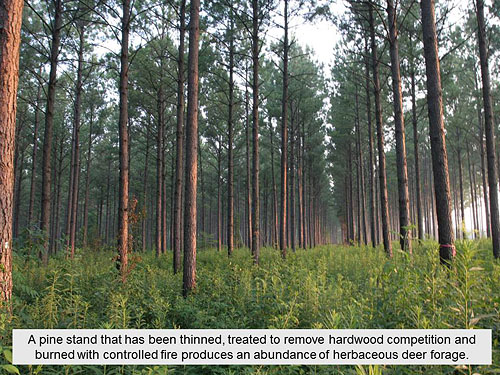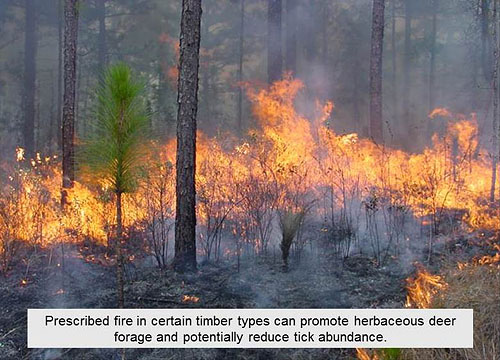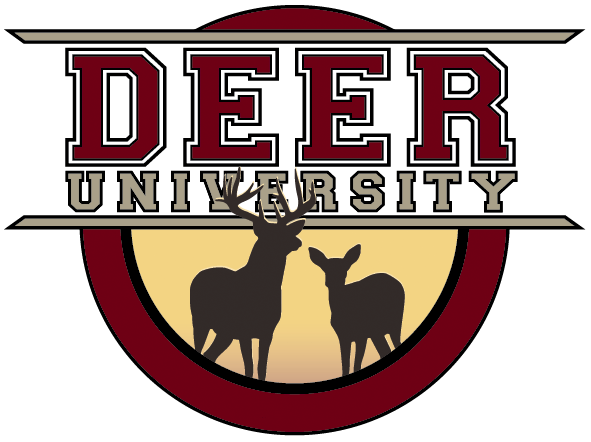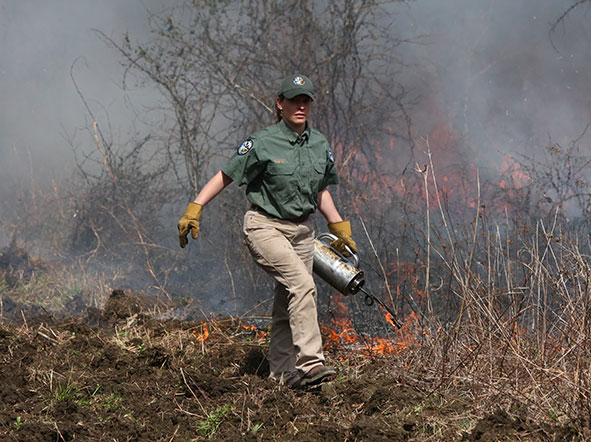Forest Habitat Management
Aside from population control, forest management has the most important influence on deer populations over much of their range. The production of understory vegetation is related directly to a number of factors including site quality, forest type, and stand age and structure. Abundant forage is produced only when sunlight, space and nutrients are available. Timber harvest allows sunlight to reach the forest floor, creates soil disturbance and stimulates the production of desirable herbaceous vegetation, woody vines and other browse species which are of high nutritional value to deer and provide escape cover.
Young clear-cuts may provide abundant forbs, vines, woody browse and soft mast for a limited time, depending on the type of site preparation and release procedures used during planting. The type of stand establishment methods used will affect available forage, and this effect is not necessarily consistent in all regions. For example, in the Lower Coastal Plain of Southeast Mississippi, removal of low quality woody vegetation by applying a chemical site preparation made sunlight, space and nutrients available for higher quality forbs, which increased nutritional carrying capacity for deer. However, in a similar study in the Coastal Plain of North Carolina, forbs did not respond positively to woody browse removal. Additional relationships may be evident in other soil regions, depending on soil and plant quality.
Production of understory forage declines dramatically with canopy closure. For example, in loblolly pine plantations in Mississippi Coastal Plain nutritional carrying capacity declined from a high of 25-32 deer-days per hectare at 1-3 years post establishment to only 1 deer day per hectare following canopy closure at year 7. Carrying capacity will remain low until the stand is thinned for pulp wood, which typically occurs first at 13-17 years in southeastern pine plantations. Prescribed fire application following initial and mid-rotation thinning improves germination and growth of high quality herbaceous plants, further increasing habitat quality for deer.
However, forage production and thus carrying capacity will increase again when thinned for their first commercial product at about 15 years in loblolly pine. Additional forage production is promoted with additional thinning as trees reach saw timber size and as natural mortality thins the canopy. Silviculture practices which emphasize interspersion and juxtaposition of different age forest stands generally optimize deer habitat.
Where they occur, acorns can be an important component of the fall and winter diet of deer. Because most naturally occurring oaks do not produce substantial amounts of acorns until they are at least 40 years old, rotation lengths of 100 years or more may be appropriate for some stands. Selection cuts that promote desirable mast production and crown growth of white and red oaks, persimmons, pecans, and other mast also are desirable. In the Northeast, consider rotation lengths of 70 to 100 years for spruce-fir forests, 100 to 150 years for hemlock, 100 years for white pine, 160 years for northern white cedar, and 40 years for hardwood browse-producing stands near wintering areas.
In northern areas providing critical winter cover, vegetation should include dense stands of mature conifer cover to interrupt snow fall and provide yarding areas. Northern white cedar and hemlock are the preferred winter cover type for yarding deer. Ideally these will have 70-100 percent canopy closure and cover at least 50 percent or more of an area greater than one square mile.
In certain forest types, controlled or prescribed fire can be an important management tool. For example, in some Southern pine types, fire can increase browse production and palatability, soft mast production, nutritional value of some forages, and the abundance of some important forb — as seen here.
Controlled burning also may reduce parasite abundance, particularly immature stages of ticks. Most pine species and some oaks, such as post oak, have thick bark or cambium layers that allow them to survive mild understory fires without damage. Prescribed fire has also been shown to benefit deer habitats in Minnesota, Wisconsin, and western states.
Controlled fire may also promote establishment of less desirable vegetative types. For example, hot fires in post oak vegetation can lead to grassland savanna rather than a brush understory. In the pine flatlands of the Southern Piedmont, repeated prescribed fire can result in a dense understory of saw palmetto and loss of desirable browse species. Addition of mechanical disturbances, such as roller chopping, in these pine flatlands can prevent the understories from being dominated by palmetto and promote more desirable plant species.

Thinned and Burned Pine Plantation

Unthinned and Unburned Pine Plantation




